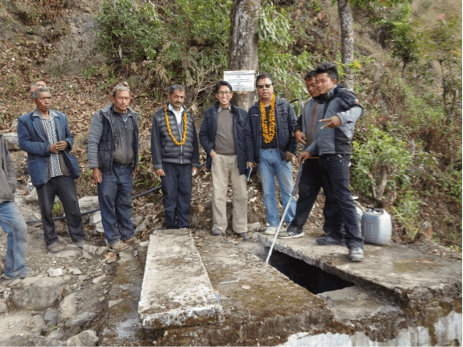It Takes a Village – and Some Effective Fundraising Efforts – to Rebuild
Located on the edge of a mountain range is the remote Nepali village of Siman Singh Okhreni. A year ago, a 7.8 magnitude earthquake shook Nepal, virtually flattening this village. Residents have been living in temporary shelter ever since.
When assessing how to tackle the daunting task of reconstruction, the villagers decided their first step should be rebuilding their drinking water system in order to prevent water borne diseases that arise when there is a lack of access to clean drinking water. For assistance they called on the Society for Partners in Development (SPD), which is the philanthropic arm of Senge Adventures, a tourism company that organizes expeditions in the Himalayas. SPD worked quickly after the earthquake to deliver customized relief packages to their Sherpa trekking staff and 130 of the most affected families in the region.

The process of reconstructing Siman Signh Okhreni’s drinking water system was an immense task. Villagers determined that the reservoir tanks and break pressure chambers had incurred large cracks and were unusable. The underground pipes had also been ripped apart and were damaged beyond repair. The materials needed were costly, and the transportation fees associated with trucking in these materials even more so.
Fortunately, these materials and transportation costs were covered with a $5,000 grant from Generosity in Action (GIA), a PVF designated fund. Hours after the earthquake, GIA partnered with Mountain Travel Sobek, an adventure travel operator, to provide aid to the people of Nepal. They tapped into Mountain Travel Sobek and GIA’s vast networks and raised $95,000 in a matter of months through small individual donations.

These funds, along with a concerted community effort, helped make numerous reconstruction projects like this possible. In Siman Signh Okhreni, more than 100 villagers volunteered to provide the labor for the water system project, and they worked together over 17 days to complete it. Now that clean drinking water is accessible again for approximately 200 families in the area, the villagers have turned to rebuilding their homes.
A year later, there is still much to do to rebuild Nepal, but the success of this project teaches us that it takes is a village – and some effective fundraising efforts – to make this possible.





